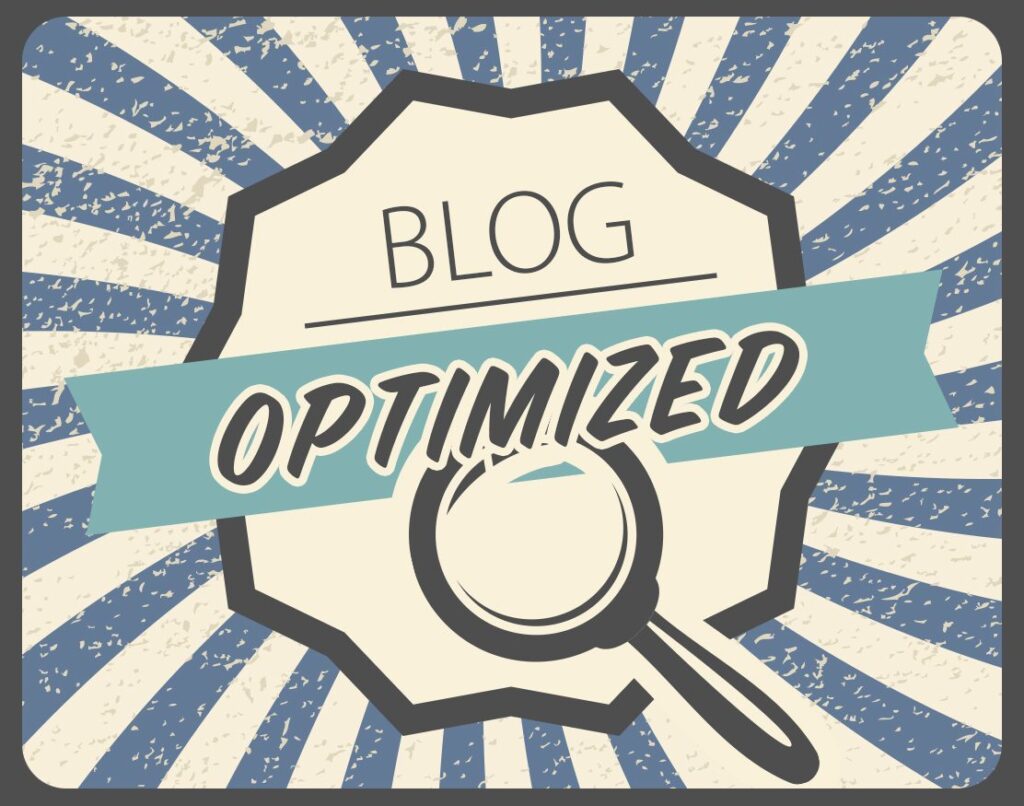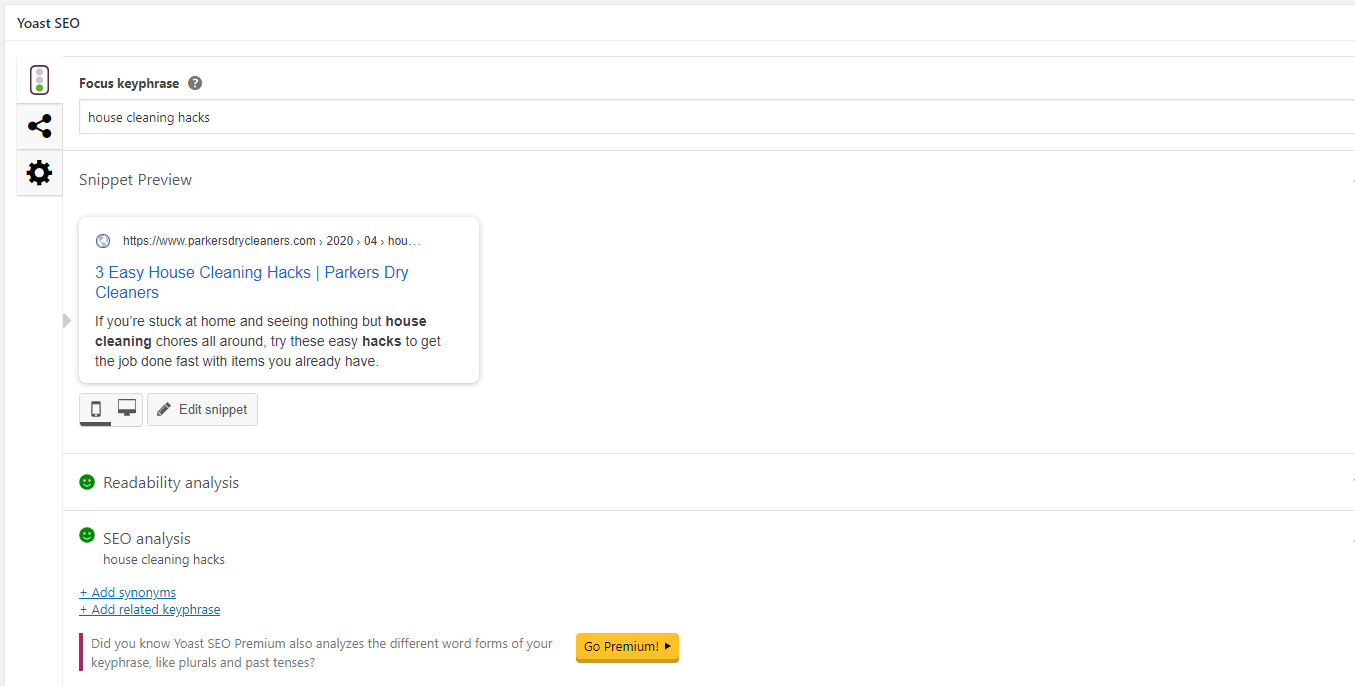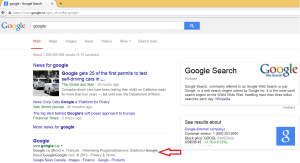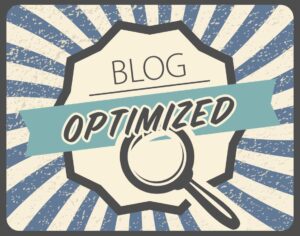Oct. 6, 2014

How To Make Sure Your Blog Post Is Optimized For SEO
There are millions of blog posts being published every single day by a vast array of blogging networks. Some blog posts are quality posts that actually present relevant information whether it be news, entertainment, sports, education etc… On the other hand, certain blogs are written specifically for advertising purposes to promote certain products and/or services. Writing a blog post is great for a number of different reasons, but driving relevant traffic to your post and making sure that people find it is another story. There are numerous ways to drive traffic to your posts, social media, forum participation, links via other blogs, PPC and even through SEO. Today I am going to explain how to make sure your blog post is properly optimized for SEO and achieve higher organic rankings for people to find your content via Search Engines.
Things You Need To Do For Your Blog Post To Be Optimized For SEO
- Keyword Research
- Meta tag adjustments
- Yoast SEO
- Semantic language
- Social media engagement and sharing opportunities
- Unique and quality content
- Heading tags (h tags)
- Building an email list
- Images and videos
- Internal Linking
- Co-citations
These are the things I do prior to publishing my blogs. It’s important to understand that you would be much better off investing your time in providing a quality blog post with all these factors instead of just doing a quick job. You will gain a lot more traffic from 1 properly optimized blog post than writing 10 posts that are written simply because you were told: “You Have to…”. That said we need to understand that some blog posts don’t require all of the above. For example, a contractor that wants to blog about a job he did with before and after images, the area of service and basic information about the project is not required to do keyword research because in this case the contractor should just focus on presenting his project over finding ways to implement keywords in the text. After all, blog posts are supposed to be for the person who searches and not for the search engine.
Keyword Research
Using keyword research is important when writing a blog post because you want to see ideas of what people are looking for related to your topic, additionally, you’ll identify how many people are interested in the subject matter. Keyword research is only meant for you to find potential words and phrases you can implement in your titles, content and meta tags. The important thing to keep in mind about keyword research is that the keywords are not meant to be stuffed everywhere. Keywords are meant to be included where they actually make sense and sound natural. A good practice is to do your keyword research and use these words throughout your content where they are necessary for semantic language. After Google’s Hummingbird update, it is important to use semantic language throughout your content.
It is helpful to find one longtail keyword to write your content towards. We suggest doing research to see what your competitors are writing about and see how you can make it better.
Useful Links
Meta Tag Adjustments
What Are Meta Tags?
Meta tags go into the code of your website to specify to the search engine what your content is about on that specific page. Meta Tags used to include keywords, however recently major search engines have stopped reading these because they were classified as a “spammy” techniques. What I’m going to cover here is what metadata you need to edit for your website. The 2 main components of metadata are unique titles and descriptions for each page.
What Are Meta Title and Meta Description Tags?
Meta titles are the titles of the pages on your website. They are not the titles that are seen throughout your content. They are titles that we see on search engines and at the top of your browser tabs. Here is an example of a meta title in the browser:
Meta titles also show in the search engine as the title of the page listed in the organic Google section. Here is an example:
Meta description are the descriptions that are listed in the organic section of search engines that describe the pages a search partner is looking at. Here is an example:
How Should You Adjust Your Meta Tags
You should describe in the meta tags what the search partner is expected to see on that page. Titles and descriptions are not supposed to be stuffed with keywords. They need to be relevant to your content and if your content is relevant to the keyword you are targeting then you can include it in the title and the description of that page.
Important Facts
Keep in mind that the maximum characters you should include for your title is 56 and the maximum characters you should include for your description is 156. To see how many characters you are typing you can use this tool.
Click here to find out more about titles and descriptions according to Google Webmaster Tools.
Yoast SEO
This WordPress plugin is a useful tool in easily detecting whether or not your blog post is properly optimized. We highly recommend installing this plugin to implement across all your blogs. You can identify what your focus keyword is, write your SEO title, meta description, and slug towards it, and it will give you a light indicator to let you know if everything checks out and your post is optimized. If not, Yoast will outline what else is required to get your post the green light.

Using Semantic Language Throughout Your Content
“Semantic search uses artificial intelligence in order to understand the searcher’s intent and the meaning of the query rather than parsing through keywords like a dictionary. When you search now, Google gives you results based solely on the text and the keywords that you put in that search. Essentially, Google gives you its best guess.” – Source:http://mashable.com/2012/03/22/google-semantic-search-seo/ By Erin Everhart Mar 22, 2012.
What this means is that Google is trying to figure out based on the keywords a person types into the search bar what results are the most relevant for them even if the keywords are not the same. This is why it is important to use semantic language throughout your content and not just on blogs but in your content on site as well.
Social Media and Sharing Opportunities
Why is it important to engage in social media for SEO? Is a question I get asked a lot from people who say they read online that social signals are not a strong signal for SEO as of now. The reason behind this is because search signals indirectly affect your websites SEO.
How Does Social Media Impact SEO?
Social media shares, likes, and engagement help build authority to your website or blog post. Google sees that people are enjoying your post and they are sharing it. This brings more relevant traffic to your website which helps you reduce bounce rate, increase conversions and helps you grow your audience. If a post has a lot of social engagement and shares that means that your content is of high quality and provides Google an understanding that searchers should get a first pick to see something that others like.
Use Unique and Quality Content
Perhaps one of the more important things in writing a blog post is unique and quality content. Unique content means that you are the writer of this content and that you didn’t copy and paste it from another website. Quality content is content that reads well, resonates with people and gives them the need or the urge to share your content with others. It also leads people to commenting on your post which is a ranking signal in Googles eyes.
Click here for 5 advanced tips for blogging for small businesses.
Using Heading tags (h tags) The Proper Way
What Are H (h tags)? Also Known as Heading Tags
These are tags that represent the titles throughout your content in your website’s code and in its appearance. An important thing to keep in mind is having the appropriate design for each heading tag. H1 is your main heading and as the number increases (H2, H3, H4, H5, H6) These are your subheadings.
Heading Tag Structure
The way to use heading tags properly is fairly easy. Here is an example of an H tag structure:
h1 – Canada
h2 – Ontario
h3 – Toronto
h4 – North York
h5 – Bathurst and Sheppard
h6 – Metro at Bathurst and Sheppard
Building an Email List
Building an email list is important because it helps you share your content with people who are already interested in what you have to say. By building an email list it will send relevant traffic to your blog posts. And indirectly help you with social media engagement. Make sure that you don’t spam your email list and that you pay attention to the relevancy information being mailed out.
Images and Videos Throughout Your Blog Post
Nowadays, peoples, attention span is very short. People want to see images, videos, and infographics because it helps them visually understand what your content is about. Making sure that your content is visually appealing and engaging is very important. Videos can be either created by you or embedded through YouTube or other video hosting websites such as Vimeo. Make sure that for every video. You include a description and also drop a link in the comment section of that video. If it is not yours for people to visit your blog post. If it’s your video make sure to include the URL to your post which the video is related to in the description settings of the video. For images be sure to add an “alt tag” describing exactly what’s in the image.
To learn more about alt tags and image publishing guidelines click here.
Internal Linking
Internal linking means having a certain anchor text (Google – Google is the anchor text) or raw URL linking to another page within your website. The use of Internal linking is important to drive relevant traffic to other related blog posts. And help you with your SEO rankings.
Co-Citations
Co-Citations are links to relevant sources or websites that describe or are related to the content that you are writing. For example in this blog post, I have included many co-citations to relevant links. That I believed would help you understand this blog post better. Co-citations are an important factor in SEO and show Google the relevancy of your content. And other quality content publishing websites. If your blog post is good enough maybe you can get a co-citation to your website as well.
THE END
Thank you for reading my post and I hope that I have helped you understand more about how to write a blog post that is SEO friendly. If you have any questions, please feel free to reach out to us.
Book with us
Let’s accomplish what you are looking for, our team of experts are here for you.
Let's work togetherWarning: Working with our team may result in excessive creativity, uncontrollable 'aha' moments, and an addiction to perfect pixels. Please proceed with caution.






